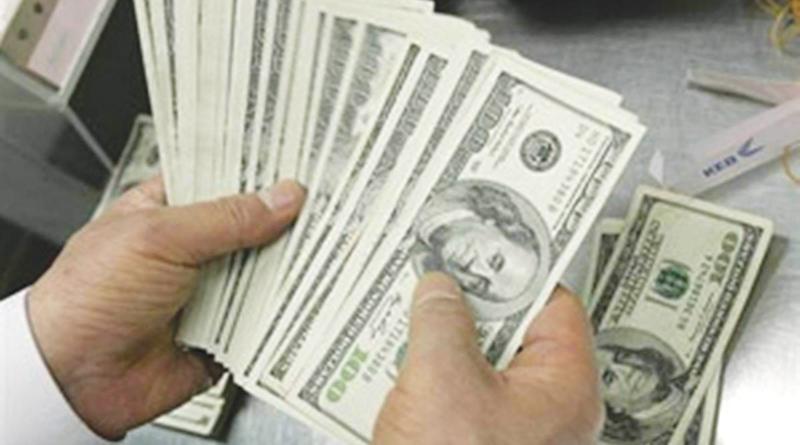
The receipt of the allocation from the International Monetary Fund (IMF) , the loan from the China Development Bank and the swap arrangement with Bangladesh Central Bank will improve liquidity and stabilize the forex market, said State Minister of Finance, Ajith Nivard Cabraal.
He said exporters and importers who expected the Rupee to depreciate would now do well to convert forex receipts early and phase out imports. However, Sri Lanka’s debt for the remainder of the year and next year is around USD 2 billion according to statistics.
Sri Lankan reserves strengthened by receiving USD 787 million from the IMF and a further USD 150 million from Bangladesh Central Bank as a swap arrangement while a further RMB 2000 mn (around USD 300 mn) from China Development Bank to be received shortly.
The IMF distributed a total SDR allocation equivalent to US dollars 650 billion among its member countries on August 23, in proportion to their existing quotas in the IMF. This provides additional liquidity to the global economy, at a time of an unprecedented crisis due to the Covid-19 pandemic, supplementing countries’ foreign exchange reserves and reducing their reliance on expensive domestic and/or external debt.
Countries can use the space provided by the SDR allocation to support their economies and step up their fight against the adverse effects caused by the pandemic. The IMF SDR allocation is not a loan from the IMF and no specific conditionalities attached to the allocation. Previously, the IMF had allocated SDRs to member countries in 2009, 1979-81, and 1970-72.
The foreign currency swap facility from the Bangladesh Bank totalling US dollars 200 million was agreed upon in view of strengthening economic and financial cooperation between the two countries. This swap facility has been provided for a period of 3 months with the possibility of rolling over twice for similar periods, and it will be disbursed in three tranches, i.e., US dollars 50 million, US dollars 100 million, and US dollars 50 million. The first two tranches have already been received. The Government of Sri Lanka expects to receive the remainder of the syndicated loan from China Development Bank shortly. This disbursement completes the total syndicated loan of US dollars 1.3 billion from China Development Bank. These foreign exchange receipts help improve the country’s Gross Official Reserves, while enabling the Central Bank to further facilitate the liquidity conditions in the domestic foreign exchange market.
With the materialisation of envisaged inflows, including non-debt creating foreign currency inflows to the Government, Sri Lanka’s foreign exchange reserves are expected to improve further in the period ahead. SDRs are being distributed to countries in proportion to their quota shares in the IMF and Sri Lanka has qualified to receive SDR 578 million or US $ 816 million at current rates.
Sri Lanka received its share of the global SDR allocation by the IMF and the initial disbursements under the bilateral currency swap arrangement between the Central Bank of Sri Lanka and the Bangladesh Bank last month.
Sri Lanka’s gross official reserves dropped to 2,833.5 million US dollars in July 2021, from 4,060 million in June after a billion US dollar bond and some other accounts were repaid in July, official data show. The Central Bank raised the Standing Deposit Facility Rate and the Standing Lending Facility Rate by 50 basis points each, to 5.00 percent and 6.00 percent and the Statutory Reserve Ratio applicable on all rupee deposit liabilities of licensed commercial banks (LCBs) by 2.0 percentage points to 4.00 percent, to addressing the imbalances on the external sector of the economy and to preempt the buildup of any excessive inflationary pressures over the medium term, amidst improved growth prospects.
The deficit in the trade account widened on a year-on-year basis for the fourth consecutive month in June 2021. Both exports and imports were significantly higher in June 2021 compared to June 2020. Considering the first half of the year, although exports recorded a healthy growth, import expenditure increased at a higher pace.
Workers’ remittances recorded a year-on-year decline in June 2021, while earnings from tourism remained at minimal levels. In the financial account, both foreign investment in the government securities market and the Colombo Stock Exchange (CSE) continued to record marginal net outflows during the month.
